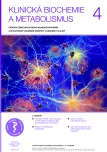Determination of chlorides in serum by methods with ion-selective electrodes (ISE). Standardization without harmonization.
Authors:
B. Friedecký 1; J. Kratochvíla 1
Authors‘ workplace:
ÚKBD LF a FN Hradec Králové
1; SEKK Pardubice
2
Published in:
Klin. Biochem. Metab., 30, 2022, No. 4, p. 101-104
Overview
Insufficient level of analytical quality of chloride determination in blood serum and plasma using routine ISE methods has been demonstrated by the external quality assessment (EQA), by assessment of bicarbonate interference, and longterm follow-up of patient results in approx. One hundred thirty laboratories in several countries. The principal issues are considerable differences between test kits and instruments of various producers. The cause is insufficient selectivity and signal stability of many commonly used chloride electrodes, leading to low diagnostic effectivity of measurement results. This can be demonstrated by extremely high reference change values (RCV). Paradoxically, for many years there was a functional reference system of chloride measurement and metrological traceability of routine methods calibration.
Keywords:
bias – Chlorides – Bicarbonates – external quality assurance – ISE
Sources
1. Friedecký, B., Kratochvíla, J. IVDR In Vitro Diagnostic Device Requirement. Implementace nové evropské směrnice IVDR a její dopady. FONS, 2022, 2, s. 13-15.
2. Koostra-Ros, J. E., van der Hagen, E. A. E., van Schrojenstein Lantman, M., Thelen, M., van Berkel, M. et al. (In)direct chloride ISE measurements, room for improvement. Clin. Chem. Lab. Med., 2022, 60(7), e168-e171. Dostupné z: https://doi.org/10.1515/cclm- 2022-0220.
3. Ricós, C., Perich, C., Boned, B., Gonzáles-Lao, E., Diaz-Garzón, J. et al. Standardizationin laboratory medicine:Two years experience from category 1 EQA programs in Spain. Biochemia Medica (Zagreb), 2019, 29(1), 010701. Dostupné: https://doi.org/10.11613/ BM.2019.010701
4. Dimeski, G., Clague, A. E. Bicarbonate interference with chloride-ion-selective electrodes. Clin. Chem., 2004, 50(6), s. 1106-1107.
5. Monteyne, T., Oyaert, M., Van Dalem, A., Godefroid, M., Cuyks, M. et al. Impact of bicarbonate interference on routine ion-selective electrode chloride measurements. Ann. Lab. Med., 2022, 42(5), s. 566-574.
6. Goossens, K., Van Uytfanghe, K., Twomey, P. J., Thienpont, L. M. et al. Monitoring laboratory date across manufacturers and laboratories-A prerequisite to make big data work. Clin. Chim. Acta, 2015, 445, s. 12-18.
7. Aarsland, K. A., Fernandez-Calle, P., Webster, C., Coskun, A., Gonzales-Lao, P. et al. The EFLM Biological Variation Database. Dostupné z: https:// biologicalvariation.eu
8. Aarsland, K. A., Díaz-Garzón, J., Fernandez-Calle, P., Guerra, E., Locatelli, M. et al. The Eubivas: Within-and between-subject biologic variation data for electrolytes, lipids, urea, uric acid, total protein, total bilirubin, direct bilirubin and glucose. Clin. Chem., 2018, 64(9), s. 1380-1393.
9. Ben Rayana, M., Burnett, R. W., Covington, A. K., D´Órazio, P., Fogh-Andersen, N. et al. Recommendation for measuring and reporting chloride by ISEs in undiluted serum, plasma and blood. IFCC Scientific Division committee on POCT and working group on selective electrodes. Clin. Chem. Lab. Med., 2006, 44(3), s. 346-352.
Labels
Clinical biochemistry Nuclear medicine Nutritive therapistArticle was published in
Clinical Biochemistry and Metabolism

2022 Issue 4
Most read in this issue
- Serum amyloid A and its clinical significance
- 14-3-3 proteins and their clinical significance
- Budoucnost KBM od č.1/2023
- Determination of chlorides in serum by methods with ion-selective electrodes (ISE). Standardization without harmonization.
